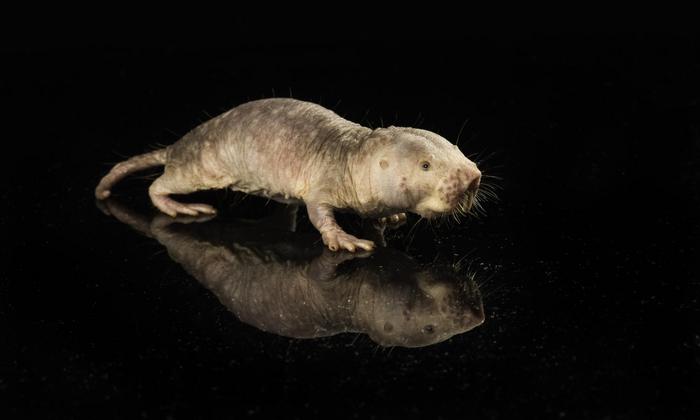Scientists at the University of Rochester report that they have successfully transferred a longevity gene from naked mole rats to mice, resulting in improved health and an extension of the mouse’s lifespan.
Naked mole rats, known for their long lifespans and resistance to age-related diseases, have long captured the attention of the scientific community. By introducing a specific gene responsible for enhanced cellular repair and protection into mice, the Rochester researchers believe their study “Increased hyaluronan by naked mole-rat Has2 improves healthspan in mice,” which appears in Nature, has opened exciting possibilities for unlocking the secrets of aging and extending human lifespan.
“Our study provides a proof of principle that unique longevity mechanisms that evolved in long-lived mammalian species can be exported to improve the lifespans of other mammals,” says Vera Gorbunova, PhD, the Doris Johns Cherry Professor of biology and medicine at Rochester.
Gorbunova, along with Andrei Seluanov, PhD, a professor of biology, and their colleagues, describe in the Nature paper how they successfully transferred a gene responsible for making high molecular weight hyaluronic acid (HMW-HA) from a naked mole rat to mice. This led to improved health and an approximate 4.4 percent increase in median lifespan for the mice.
“Abundant high-molecular-mass hyaluronic acid (HMM-HA) contributes to cancer resistance and possibly to the longevity of the longest-lived rodent—the naked mole-rat. To study whether the benefits of HMM-HA could be transferred to other animal species, we generated a transgenic mouse overexpressing naked mole-rat hyaluronic acid synthase 2 gene (nmrHas2). nmrHas2 mice showed an increase in hyaluronan levels in several tissues, and a lower incidence of spontaneous and induced cancer, extended lifespan and improved healthspan,” write the investigators.
“The transcriptome signature of nmrHas2 mice shifted towards that of longer-lived species. The most notable change observed in nmrHas2 mice was attenuated inflammation across multiple tissues. HMM-HA reduced inflammation through several pathways, including a direct immunoregulatory effect on immune cells, protection from oxidative stress and improved gut barrier function during ageing. These beneficial effects were conferred by HMM-HA and were not specific to the nmrHas2 gene.
“These findings demonstrate that the longevity mechanism that evolved in the naked mole-rat can be exported to other species, and open new paths for using HMM-HA to improve lifespan and healthspan.”
A mechanism for cancer resistance
The researchers previously discovered that HMW-HA is one mechanism responsible for naked mole rats’ unusual resistance to cancer. Compared to mice and humans, naked mole rats have about ten times more HMW-HA in their bodies. When the researchers removed HMW-HA from naked mole rat cells, the cells were more likely to form tumors.
The team, which wanted to see if the positive effects of HMW-HA could also be reproduced in other animals. genetically modified a mouse model to produce the naked mole rat version of the hyaluronan synthase 2 gene, which is the gene responsible for making a protein that produces HMW-HA. While all mammals have the hyaluronan synthase 2 gene, the naked mole rat version seems to be enhanced to drive stronger gene expression.
The researchers found that the mice that had the naked mole rat version of the gene had better protection against both spontaneous tumors and chemically induced skin cancer. The mice also had improved overall health and lived longer compared to regular mice. As the mice with the naked mole rat version of the gene aged, they had less inflammation in different parts of their bodies—inflammation being a hallmark of aging—and maintained a healthier gut.
While more research is needed on exactly why HMW-HA has such beneficial effects, the researchers believe it is due to HMW-HA’s ability to directly regulate the immune system.


